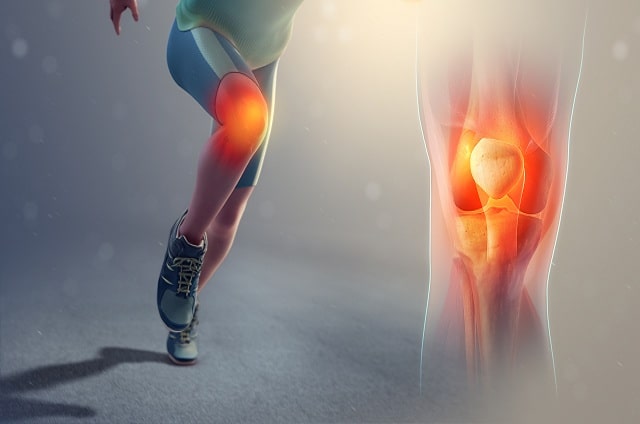The largest joint in the human body, most people will experience some type of back of knee pain or discomfort during their lives. Whether caused by a sudden injury, overuse, or an underlying condition like osteoarthritis, rheumatoid arthritis, lupus, or fibromyalgia, knee injuries and conditions can cause everything from pain and stiffness to swelling, discoloration, and difficulties walking. Here’s a look at some tips and tricks to get that knee pain or injury under control–and you back on your feet.
Must Read 3 Lifestyle Problems Will make You Suffer from Back Pain

Table of Contents
Rest and Elevation
Sometimes, the simple answers are the best ones. If you’ve injured your knee, whether from playing sports, a work injury, or just a simple stumble and fall, keep off of it for a couple of days. Avoid things that can cause swelling in the first 24 hours, including very hot showers, Jacuzzis, or heating pads, and take a break from the exercise or activity that’s triggering your pain behind Knee.
Resting your knee with a small pillow under it to keep it elevated whenever you’re sitting or lying down is another good way to get the pain and swelling under control quickly.
Ice
Icing a knee injury is an excellent way to minimize swelling and pain. If you can, apply ice immediately after an injury. Additionally, applying ice, a cold pack, or even a bag of frozen vegetables for 10 to 15 minute intervals, 3-5 times a day while you’re elevating your knee can speed the healing process along.
Exercise
Exercise is not only an effective way to deal with knee pain but also to prevent it from getting worse. It aids in weight-loss, which in turn will reduce the pressure exerted on your knees because of excessive body weight. Regular exercising may also help strengthen the knees and make them less prone to causing further pain in the back of Knee. Make sure you warm up prior exercise and use knee support. You can also try yoga to enhance flexibility and gain strength in the muscles. Any muscle soreness after exercise can be eased by using an ice bag on sore areas post work out.
Moist Heat
Following the first 48 hours, you can also use moist heat to reduce pain and reestablish flexibility. Alternate between cold packs and a heating pad for the best effects.
Alter your diet
Switch to a diet that has low levels of sodium, as sodium is said to increase water retention in the body and also contributes to swelling. While vitamin C can be great for your knees, try to stay away from vegetables like tomatoes, potatoes, and eggplant. You must keep in mind these six foods that will help you keep your knees healthy – avocados, berries, ginger, soy, and fish rich in omega 3 fats, like salmon, mackerel, and tuna.
Compression and Massage
Wrapping the painful or injured knee with an elastic bandage can decrease swelling and provide support. Just make sure that you don’t over-tighten the compression bandage, as that will only exacerbate your knee pain. If the area isn’t too painful to the touch, gentle massage can also increase blood flow to the area, promoting healing. A quick online search should provide you with several gentle stretches and massages for your specific knee condition.
Anti-inflammatory medicines
Popping an anti-inflammatory tablet can provide temporary relief from knee aches. But, one thing you need to know is that this is a temporary solution and won’t completely cure your knee pain. You need to know the root cause of the ache and tackle it with proper medication, provided by a prescribed doctor.
Try acupuncture
Studies have shown that acupuncture can be quite effective in relieving knee pain. It increases blood flow in the injured/affected area and helps remove the toxins and fluids that are build up in the It helps in relaxing your muscles which results in reduced pain in the knee area, giving you the freedom to move around with ease.
Use proper footwear at all times
Your feet carry you. This is exactly why wearing proper footwear is so important, especially when you have chronic knee pain. The right kind of shoes can decrease the pressure put on your knees, provide knee support, and help relieve pain while walking, etc. making it easier for you to accomplish day-to-day activities.
Talk to Your Doctor about Physical Therapy
If your knee pain or injury hasn’t healed within two weeks, talking to your physician or health care practitioner about physical therapy or other medical solution may be a good idea.




